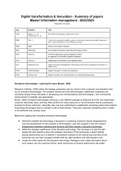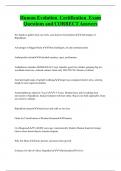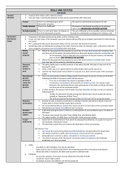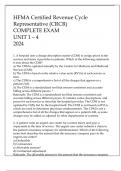Summary
Digital transformation & innovation - summary of papers for essay
- Course
- Institution
preparation for essay all mandatory papers with quotes and important figures 1995 Bower, J. L., & Christensen, C. M. Disruptive technologies: catching the wave. 2006 Tidd, J. A review of innovation models ( gives an overview of several innovation types and asks special attention for the dif...
[Show more]












